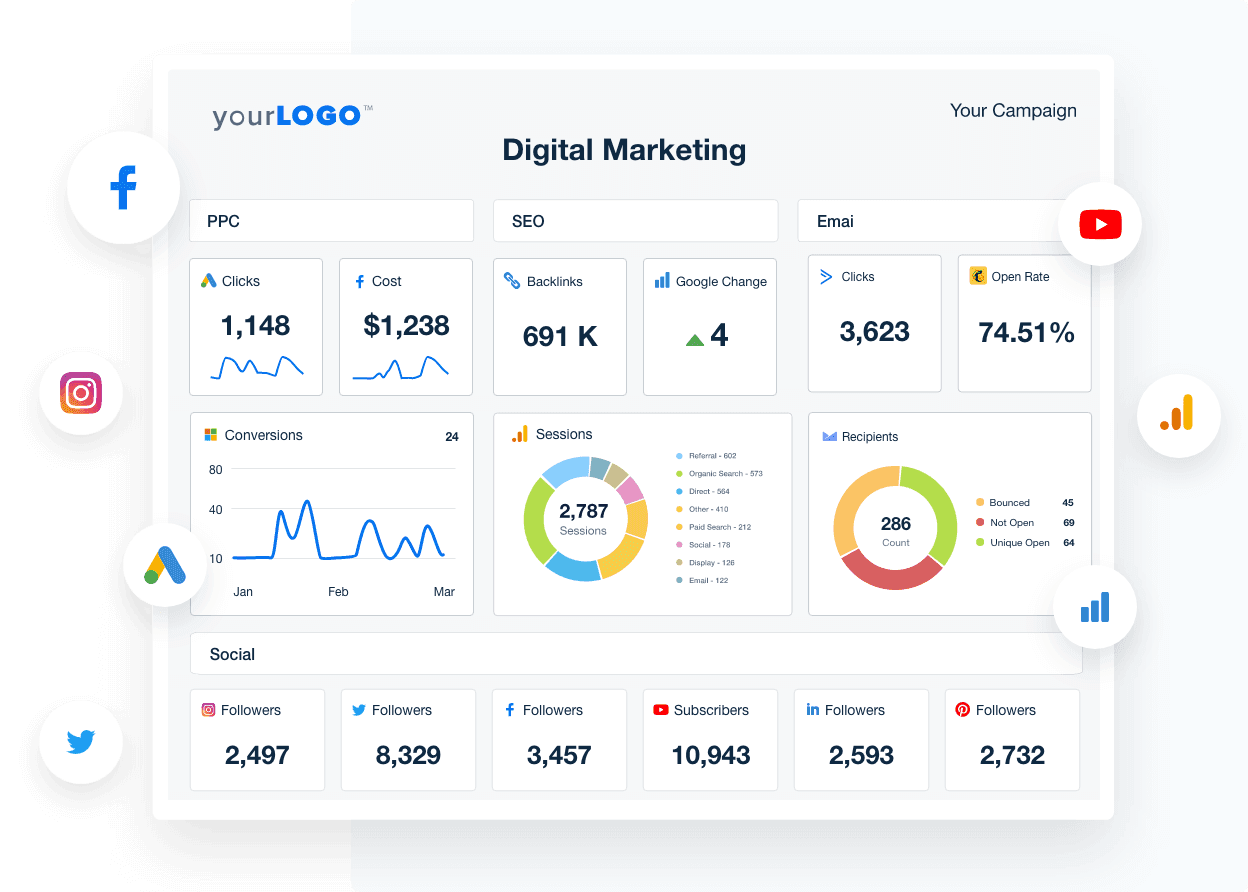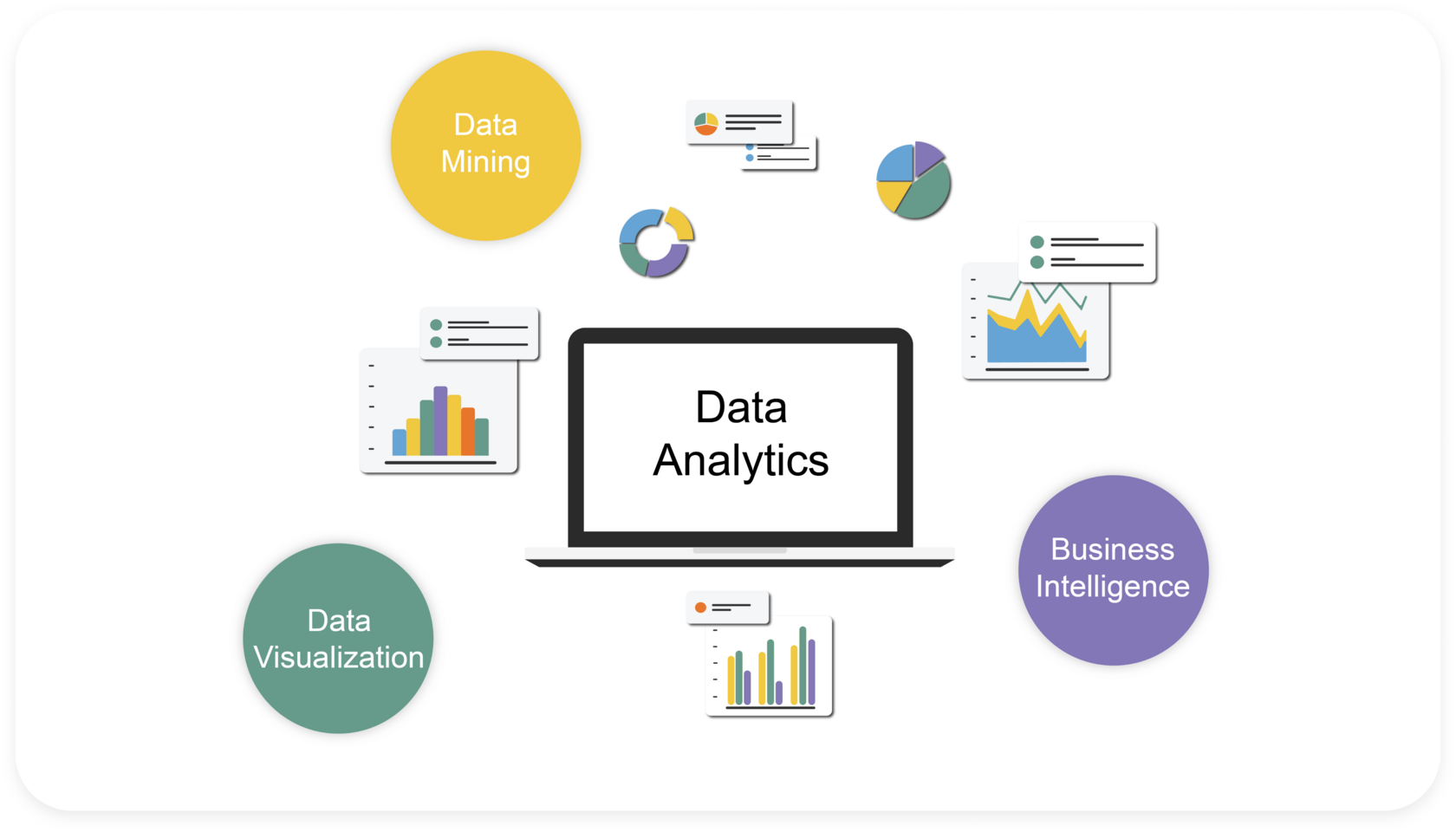Gain Competitive Edge Through Effective Analytics Implementation
Gain Competitive Edge Through Effective Analytics Implementation
Blog Article
Increase Effectiveness and Productivity Via Information Analytics
In today's data-driven landscape, businesses are increasingly recognizing the pivotal role of information analytics in improving functional efficiency and earnings. By systematically analyzing information, companies can reveal essential understandings that notify tactical decisions, simplify procedures, and tailor customer experiences (Analytics). However, the obstacle lies not only in the application of these analytical devices yet also in recognizing exactly how to convert data right into actionable results. As we discover the subtleties of reliable data-driven strategies, the implications for both short-term gains and lasting success come to be increasingly clear. What might these insights disclose for your organization?
Comprehending Data Analytics
In today's data-driven landscape, understanding data analytics is essential for organizations aiming to enhance operational performance and drive earnings. Information analytics entails the systematic computational evaluation of information sets to reveal patterns, correlations, and insights that educate decision-making. By employing numerous methods, such as statistical evaluation, artificial intelligence, and predictive modeling, companies can transform raw information right into actionable intelligence.
The process usually begins with data collection, where appropriate information is gathered from numerous resources, including transactional data sources, customer communications, and market fads. This information is after that cleaned up and arranged to make certain precision and consistency. When the data is prepared, analytical tools and software are made use of to explore and imagine the details, making it possible for stakeholders to recognize patterns and abnormalities.
Inevitably, comprehending information analytics equips organizations to make enlightened decisions based upon empirical proof rather than instinct. It helps with targeted techniques that can enhance resource allotment, improve customer satisfaction, and enhance general efficiency. As services progressively acknowledge the value of data-driven insights, a strong grip of data analytics ends up being a vital competency for leaders and groups alike, placing them for sustained success in a competitive setting.

Key Benefits for Organizations
Companies that take advantage of information analytics can open a wide variety of advantages that significantly enhance their operations and success. One of the primary advantages is boosted decision-making. Data analytics supplies workable understandings stemmed from real-time data, enabling services to make enlightened selections that align with market needs and consumer preferences.

Additionally, data analytics cultivates enhanced consumer experiences. By recognizing customer behaviors and preferences, organizations can customize their offerings, causing boosted fulfillment and loyalty. This tailored method usually causes higher conversion rates and repeat business.
Moreover, information analytics enables businesses to determine emerging patterns and possibilities. By remaining in advance of the curve, organizations can maximize new markets and developments before their rivals.
Executing Data-Driven Approaches
Successful implementation of data-driven techniques needs a detailed understanding of both readily available information and business objectives sources. Organizations must first specify their purposes plainly, making certain positioning in between information initiatives and strategic goals. This clarity enables groups to focus on relevant metrics and insights that drive decision-making.
Next, businesses must analyze their existing information facilities. This entails assessing information quality, access, and integration next page capabilities. Top notch data is crucial for exact analysis, as inadequate information can cause illinformed approaches and wasted sources. Organizations has to establish processes for information collection, cleansing, and monitoring to maintain information stability.
Moreover, promoting a data-driven culture is essential. Staff members at all levels need to be urged to leverage data in their everyday operations. Educating workshops and programs can enhance information proficiency, empowering staff to make enlightened choices based upon logical understandings.
Devices and Technologies Overview
A robust collection of tools and technologies is necessary for companies intending to harness the full potential of data analytics. These tools help with the collection, handling, and visualization of information, allowing companies to obtain workable understandings.
At the foundational level, information management systems such as SQL databases and NoSQL systems provide reliable data storage space and access capabilities. For data handling and analysis, programming languages like Python and R, along with frameworks such as Apache Glow, allow intricate computations and machine knowing applications.
Visualization devices, including Tableau and Power BI, transform raw information right into instinctive visual formats, making insights accessible to stakeholders in any way degrees. Furthermore, cloud-based systems like Google Cloud and AWS provide scalable storage space and processing solutions, fitting the growing quantities of data companies run into.
For innovative browse around this site analytics, predictive modeling and AI-driven remedies are increasingly taken on, allowing firms to forecast fads and boost decision-making processes. Incorporating these devices into existing workflows is paramount; companies that efficiently take advantage of this modern technology can dramatically enhance functional effectiveness and drive success. Thus, buying the right devices and modern technologies is a tactical vital for any kind of data-driven company.
Study of Success
Leveraging information analytics has led many companies to attain remarkable improvements in performance and profitability. One significant situation is a huge retail chain that carried out predictive analytics to optimize stock monitoring. By evaluating historical sales information and customer trends, the business minimized excess stock by 30%, resulting in substantial cost financial savings and enhanced cash circulation.
An additional example can be discovered in the manufacturing sector, where a leading vehicle producer utilized information analytics to boost its manufacturing procedures. By checking equipment performance in real-time, the organization recognized inadequacies and bottlenecks, resulting in a 20% increase in overall tools performance (OEE) This not just increased production rates but additionally reduced downtime and upkeep prices.

These study illustrate how data analytics can drive critical decision-making, maximize processes, and eventually boost both performance and productivity across different fields.
Conclusion
In conclusion, the combination of information analytics right into service operations provides significant opportunities for enhancing effectiveness and earnings. By systematically assessing check my source information, organizations can identify ineffectiveness, optimize consumer experiences, and make educated choices.
In today's data-driven landscape, comprehending data analytics is crucial for companies aiming to boost operational performance and drive productivity. Information analytics involves the organized computational analysis of data sets to uncover patterns, connections, and understandings that notify decision-making. Data analytics gives actionable understandings acquired from real-time information, allowing services to make enlightened selections that align with market needs and customer choices.
High-quality data is vital for precise analysis, as poor information can lead to misdirected techniques and thrown away sources. Organizations should establish procedures for data collection, cleansing, and administration to keep data integrity.
Report this page